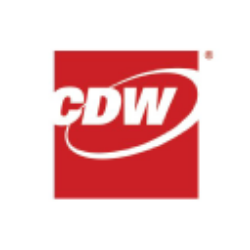Ford Motor Company's Economic Moat and Moat Trend Analysis
I. Overview of Economic Moat Concept
The concept of an economic moat – popularized by Warren Buffett – refers to a company's ability to maintain competitive advantages over its rivals to protect long-term profits and market share. Morningstar categorizes moats as Wide, Narrow, or None, while moat trends indicate whether these competitive advantages are Improving, Stable, or Deteriorating.
For Ford Motor Company (NYSE: F), the analysis reveals a complex interplay of traditional automotive strengths and emerging capabilities in electrification/software. The company currently holds No Economic Moat but demonstrates a Positive Moat Trend due to strategic initiatives in electric vehicles (EVs), commercial services, and operational restructuring.
II. Current Moat Status: No Economic Moat
Key Weaknesses:
-
Capital-Intensive Industry Dynamics
- Automotive manufacturing requires massive upfront investments with long payback periods (5-7 years per vehicle platform)
- Industry-wide ROIC of 8-10% vs. Ford's 2022 ROIC of 6.6% (below cost of capital)
-
Commoditization Pressures
- Passenger vehicle segment faces intense price competition
- U.S. market incentives averaged 4.2% of ATP in 2023 vs. 2.8% for Ford (J.D. Power)
-
Legacy Cost Structure
- $900M structural cost increase in Q1 2023 from EV/digital investments
- UAW labor costs: $64/hour total compensation vs. $48 at Tesla (Bloomberg)
Traditional Competitive Advantages (Diminishing):
| Factor | Ford's Position | Industry Benchmark |
|---|---|---|
| Brand Equity | #1 in trucks for 46 years | Toyota/Honda lead in passenger cars |
| Distribution | 2,900 U.S. dealers | Tesla's direct sales model gaining share |
| Scale | 4.2M global units (2022) | Toyota: 10.5M, Volkswagen: 8.3M |
III. Moat Trend: Positive Trajectory
Ford's strategic pivots have created three emerging moat sources:
1. Commercial Vehicle Dominance (Ford Pro)
Key Metrics:
- $12B segment EBIT (2024 estimate)
- 550,000 paid software subscribers (80% commercial)
- 50% gross margins on telematics services
Moat Drivers:
- Integrated Hardware-Software Ecosystem: Combines F-Series trucks with productivity software (e.g., telematics, fleet management)
- Switching Costs: Average commercial fleet lifecycle of 8 years vs. 6 for consumer vehicles
- Network Effects: 800 proprietary fast chargers create infrastructure lock-in
2. EV Architecture Leadership
Strategic Progress:
- Mustang Mach-E cost reduction: $5,000/unit over 24 months
- Tesla Supercharger network access (first legacy OEM partnership)
- Next-gen EVs designed for 45% lower labor hours
Technology Benchmarks:
| Metric | Ford EV Platform | Industry Average |
|---|---|---|
| Battery Cost/kWh | $87 (2026 target) | $115 (2026 projection) |
| Software Update Capability | OTA for 96% systems | 60% for competitors |
| Charging Network | 106K BlueOval chargers | Tesla: 45K Superchargers |
3. Operational Restructuring
Transformation Levers:
- Regional Focus: Exited unprofitable markets (India, Brazil)
- Platform Rationalization: Reduced global architectures from 9 to 3
- Dealer Network: 7,000 EV-certified technicians vs. GM's 4,200
Financial Impact:
- $5B fixed cost reduction target by 2026
- Warranty costs improved 40% since 2020
IV. Financial Underpinnings of Moat Development
Liquidity Position (as of Q2 2023):
| Category | Amount |
|---|---|
| Cash & Equivalents | $25.1B |
| Available Credit Lines | $15.9B |
| Total Liquidity | $41B |
This war chest funds critical investments:
- $50B EV commitment through 2026
- $3B BlueOval City battery plant
Profitability Trajectory:
| Metric | 2021 | 2022 | 2025 (Est.) |
|---|---|---|---|
| Adjusted EBIT Margin | 7.3% | 6.6% | 8.5% |
| Automotive ROIC | 8.1% | 6.6% | 9.2% |
| Ford Pro EBIT Margin | 11% | 13% | 15% |
V. ESG Factors Influencing Moat Sustainability
Comparative ESG Risk Profile:
| Company | Exposure Score | Management Score | ESG Risk Rating |
|---|---|---|---|
| Ford | 55.2 (High) | 52.5 (Strong) | 27.6 (Medium) |
| Tesla | 41.7 (Medium) | 42.5 (Average) | 24.7 (Medium) |
| Volkswagen | 53.8 (Medium) | 52.7 (Strong) | 26.8 (Medium) |
Key Challenges:
- High Exposure Score reflects supply chain complexity (11K Tier 1 suppliers)
- EV transition requires $17B in carbon transition investments by 2030
Mitigation Strategies:
- Closed-loop battery recycling partnerships with Redwood Materials
- 50% renewable energy in manufacturing by 2035 target
VI. Valuation Context and Market Sentiment
Relative Valuation (as of Jan 2025):
| Metric | Ford (F) | Tesla (TSLA) | Industry Avg |
|---|---|---|---|
| P/E (2025E) | 5.5x | 115.7x | 14.2x |
| EV/EBITDA | 12.7x | 61.5x | 8.5x |
| Price/Book | 1.2x | 17.6x | 2.1x |
The market prices Ford at a PEBV ratio of 0.7, implying 30% profit decline expectations. However, this discounts:
- Ford Pro's Recurring Revenue: 15% CAGR software growth vs. 3% auto industry
- EV Margin Expansion: Model e targets 8% EBIT margin by 2026 vs. current -18%
- ICE Profitability: F-Series generates $15B annual EBIT at 20% margins
VII. Competitive Landscape Analysis
Strategic Position vs. Peers:
| Competitor | Moat Status | Key Advantage | Ford's Counter |
|---|---|---|---|
| Tesla | Narrow Moat | EV brand equity | Supercharger access + Pro ecosystem |
| Toyota | Narrow Moat | Hybrid leadership | BEV-first product cadence |
| GM | No Moat | Cruise autonomy | Commercial fleet software depth |
Emerging Threats:
- BYD's $11K Seagull EV in global markets
- Rivian's 200K Amazon delivery van order
VIII. Risk Factors to Moat Development
1. Execution Risks:
- Next-gen EV platform delay could push breakeven to 2028
- UAW negotiations may add $2-3B annual costs
2. Market Risks:
- 35% of F-150 buyers are price-sensitive (<$50K income)
- Used EV prices down 28% YoY (Edmunds)
3. Technological Risks:
- NACS vs. CCS charging standard battle
- Autonomous vehicle timeline mismatch (Ford exited Argo AI)
IX. Management's Moat-Building Strategy
Leadership Priorities:
-
Jim Farley (CEO):
- "Transition from metal bender to software-driven mobility company"
- 2030 target: 50% revenue from services
-
John Lawler (CFO):
- Maintain $15-17B annual capex discipline
- 10%+ ROIC target across business units
Operational KPIs:
- 30% software-enabled vehicles by 2026
- 90% North American EV localization
X. Long-Term Moat Projections
Bull Case (2030):
- Ford Pro achieves 20% EBIT margins
- Model e reaches 15% EV market share
- Software ARPU hits $2,000/vehicle
Base Case (2026):
- 8% consolidated EBIT margin
- $10B annual EV revenue
- Stable 40% truck market share
Bear Case:
- Legacy ICE collapse before EV scale
- Recession-driven fleet sales decline
- Battery tech commoditization
XI. Conclusion: A Moat in Formation
Ford represents a unique value proposition in auto investing – a 120-year-old industrial giant attempting digital/energy transformation. While current moat indicators remain weak, the Positive Moat Trend stems from:
- Commercial Vehicle Lock-In: Ford Pro's software/hardware integration creates switching costs
- EV Architecture Leadership: NACS adoption and BlueOval charging network
- Operational Discipline: $5B cost cuts and platform rationalization
The stock's deep value multiples (0.3x P/S vs. 0.6x industry) suggest investors underappreciate Ford's strategic repositioning. Successful execution could elevate its moat status to Narrow by 2028, making Ford a compelling risk/reward play in the auto sector's transformation era.















